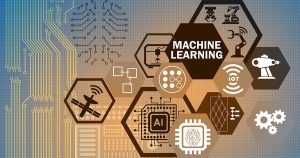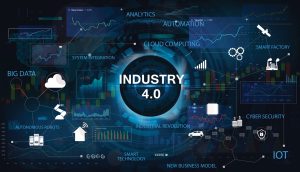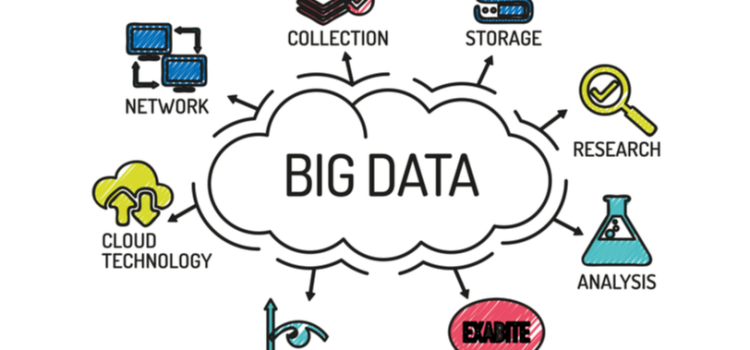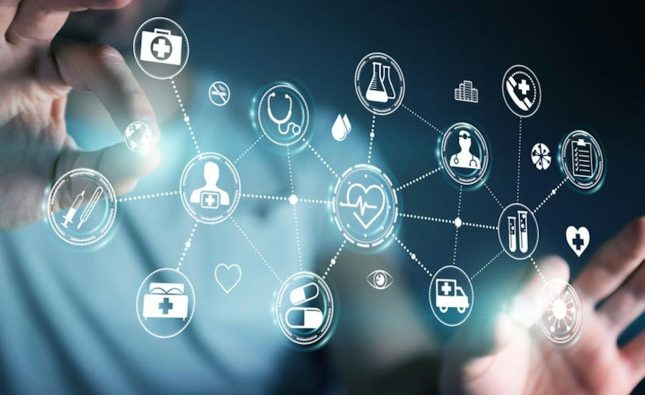
How Big Data is Driving Innovation
In today’s world, big data is no longer just a buzzword—it is a powerful tool driving innovation across industries. From healthcare to finance, from manufacturing to urban planning, the exponential growth of data has led to new opportunities and breakthroughs that were once unimaginable. By leveraging vast amounts of data, organizations are able to uncover insights, optimize processes, enhance customer experiences, and develop cutting-edge technologies.
This article explores how big data is powering innovation across sectors, highlighting key benefits, real-world examples, and case studies that demonstrate its transformative impact.
1. Big Data Fuels Artificial Intelligence and Machine Learning

One of the most profound impacts of big data is on the development of artificial intelligence (AI) and machine learning (ML). These fields rely heavily on large datasets to train algorithms, improving their ability to learn, adapt, and make predictions.
Benefits:
- Enhanced Accuracy: AI models can process and learn from vast amounts of data, improving the accuracy of predictions and decisions.
- Automation of Complex Tasks: ML algorithms can automate tasks that once required human intervention, saving time and reducing errors.
Case Study: Healthcare Diagnostics with AI
In healthcare, AI and ML have become pivotal in revolutionizing diagnostic practices. For instance, Google Health has used big data to develop DeepMind, an AI system that can diagnose diseases like diabetic retinopathy and age-related macular degeneration from retinal scans with remarkable accuracy—comparable to, or better than, human experts. By analyzing thousands of patient records, DeepMind has become a game-changer in early disease detection and personalized medicine.
Similarly, IBM’s Watson Health uses big data to assist oncologists in diagnosing cancer. By analyzing the medical history of patients and clinical trial data, Watson can recommend tailored treatment plans, helping doctors make faster and more accurate decisions.
Real-World Impact:
The healthcare sector is just one example of how AI and machine learning, powered by big data, are enabling faster diagnoses, better patient outcomes, and more personalized care. As AI algorithms continue to improve, their integration into healthcare systems will likely reduce costs and enhance the quality of care.
2. Healthcare and Life Sciences: Revolutionizing Personalized Medicine
Big data analytics is making personalized medicine a reality. By combining genetic data, medical records, and environmental factors, doctors and researchers can provide treatments tailored to the individual patient, rather than relying on a one-size-fits-all approach.
Benefits:
- Improved Patient Outcomes: Big data helps identify the most effective treatments based on genetic profiles and historical data.
- Cost Efficiency: Personalized treatments reduce the chances of ineffective therapies, saving money on unnecessary procedures and medications.
Case Study: Precision Medicine at the Mayo Clinic
The Mayo Clinic’s Center for Individualized Medicine is leveraging big data to advance precision medicine. By integrating genetic information, clinical records, and lifestyle data, the clinic creates personalized treatment plans for patients with complex conditions, such as cancer and cardiovascular diseases. In one example, big data analytics identified genetic mutations in a patient with a rare form of cancer, enabling doctors to offer a targeted drug that dramatically improved survival rates.
This approach is paving the way for tailored cancer therapies, where doctors can match patients with treatments that are most likely to be effective based on their genetic makeup, reducing side effects and improving the quality of life.
Real-World Impact:
As the cost of genomic sequencing drops, the potential for precision medicine continues to grow. Big data allows healthcare providers to deliver customized treatment plans, ensuring patients receive the right care at the right time. Over time, personalized medicine is expected to become the standard of care in many areas of healthcare.
3. Smart Cities and IoT: Transforming Urban Life
The rise of Internet of Things (IoT) devices and sensor networks has given birth to the concept of smart cities. Big data plays a pivotal role in managing and optimizing urban resources, from traffic management to energy efficiency.
Benefits:
- Efficient Resource Management: Smart cities use data to optimize water use, energy consumption, waste management, and public transportation systems.
- Improved Quality of Life: IoT devices allow cities to monitor air quality, traffic congestion, and public safety, enhancing the living experience for residents.
Case Study: Barcelona’s Smart City Initiative
Barcelona is widely regarded as one of the world’s most innovative smart cities. The city has implemented a variety of IoT sensors and big data technologies to improve urban living. For example, smart streetlights adjust their brightness based on pedestrian traffic, reducing energy consumption. The city also uses sensors to monitor parking spaces, helping drivers find available spots and reducing traffic congestion.
In addition, Barcelona’s smart water management system uses big data analytics to monitor water usage across the city, detecting leaks and inefficiencies in real time. This has led to a significant reduction in water waste, contributing to the city’s sustainability goals.
Real-World Impact:
Smart cities are transforming urban living, improving efficiency, sustainability, and the overall quality of life. As more cities adopt IoT and big data technologies, we can expect smarter, more connected environments that respond to the needs of residents in real time.
4. Retail and Consumer Insights: Personalizing the Shopping Experience

Big data has revolutionized the retail sector by enabling companies to gain deeper insights into consumer behavior and preferences. By analyzing large volumes of transactional data, retailers can personalize marketing campaigns, improve inventory management, and enhance the customer experience.
Benefits:
- Enhanced Customer Experience: Personalized product recommendations and tailored marketing improve customer satisfaction.
- Optimized Inventory Management: Predictive analytics allows retailers to forecast demand and optimize inventory, reducing waste and improving profitability.
Case Study: Amazon’s Personalization Engine
Amazon is a prime example of how big data drives innovation in retail. The company’s recommendation engine, which suggests products based on a customer’s browsing and purchasing history, is powered by advanced machine learning algorithms that analyze vast amounts of consumer data. This personalization has been a key factor in Amazon’s success, contributing to higher conversion rates and increased sales.
Additionally, Amazon uses big data for inventory forecasting, ensuring products are stocked in the right quantities at the right time. By analyzing historical sales data, seasonality trends, and external factors (such as weather), Amazon can minimize stockouts and overstock situations.
Real-World Impact:
The ability to deliver a personalized shopping experience has become a competitive advantage in the retail industry. As big data tools become more advanced, retailers are able to provide increasingly customized offerings, creating a seamless shopping experience for customers both online and in-store.
5. Financial Services and Risk Management
The financial services industry has embraced big data for a wide range of applications, from fraud detection to risk management and algorithmic trading. With access to vast amounts of financial data, institutions can make faster, more informed decisions.
Benefits:
- Fraud Prevention: Big data enables real-time monitoring of transactions, helping to detect and prevent fraudulent activities.
- Risk Analysis: Financial institutions use big data analytics to assess risk and optimize investment strategies.
Case Study: Ant Financial and Credit Scoring
In China, Ant Financial, the financial arm of Alibaba, has revolutionized credit scoring using big data. Instead of relying on traditional credit scores, Ant Financial analyzes non-traditional data such as utility payments, social media activity, and mobile phone usage to assess creditworthiness. This has made financial services more accessible to millions of people who do not have a traditional credit history.
Similarly, financial institutions use big data to monitor transaction patterns and detect anomalies that may indicate fraud. In real-time, systems can flag suspicious activities and prevent fraudulent transactions before they occur.
Real-World Impact:
Big data is transforming the financial landscape by improving risk management, enhancing fraud detection, and enabling more inclusive financial services. As data analytics tools become more sophisticated, financial institutions will be able to better predict market trends and optimize their investment strategies.
6. Manufacturing and Industry 4.0: Optimizing Production Processes

The advent of Industry 4.0—the integration of IoT, big data, and artificial intelligence—has ushered in a new era of manufacturing. By collecting data from machines, sensors, and production lines, manufacturers can optimize operations and enhance product quality.
Benefits:
- Increased Efficiency: Big data helps identify bottlenecks and inefficiencies in the production process, leading to streamlined operations.
- Predictive Maintenance: By analyzing equipment data, manufacturers can predict failures before they occur, reducing downtime and maintenance costs.
Case Study: General Electric’s Predix Platform
General Electric (GE) uses its Predix platform to collect and analyze data from industrial equipment. This platform provides real-time insights into the health of machinery, allowing companies to perform predictive maintenance. For example, GE has helped airlines reduce downtime by predicting when engine components will need maintenance, minimizing flight disruptions.
In manufacturing, big data helps improve product quality by monitoring production parameters and identifying deviations from optimal conditions. This reduces defects and ensures consistent quality across large-scale production.
Real-World Impact:
The integration of big data in manufacturing processes is leading to smarter factories, where machines and equipment can communicate with one another, leading to more efficient production processes and higher-quality products. This trend is expected to accelerate as more companies embrace Industry 4.0 technologies.
7. Cybersecurity: Protecting Against Evolving Threats
As cyber threats become more sophisticated, organizations are turning to big data to protect sensitive information and secure networks. By analyzing vast amounts of data in real time, companies can detect and mitigate cyberattacks before they cause significant harm.
Benefits:
- Real-Time Threat Detection: Big data analytics can identify potential threats and vulnerabilities, enabling organizations to respond faster.
- Improved Security Protocols: Big data helps organizations continuously refine and optimize their security measures.
Case Study: Darktrace’s AI-Powered Cybersecurity
Darktrace, a leader in cybersecurity, uses machine learning algorithms to analyze network traffic and detect anomalies. By continuously analyzing big data from network activity, Darktrace’s Enterprise Immune System can identify threats that would otherwise go unnoticed, preventing data breaches and cyberattacks.
In one instance, Darktrace detected a sophisticated cyberattack targeting a healthcare provider’s system, blocking the threat before any data was compromised.
Real-World Impact:
Big data is making a significant impact in cybersecurity by providing organizations with the tools they need to proactively detect and respond to cyber threats. As cyberattacks become more complex, the role of big data in cybersecurity will continue to grow.
Conclusion: The Future of Big Data-Driven Innovation
Big data has proven to be a game-changer across numerous sectors. From healthcare to finance, from smart cities to manufacturing, the ability to harness vast amounts of data is enabling organizations to innovate, optimize processes, and deliver personalized experiences like never before. As data generation continues to rise, so too will the potential for innovation. However, challenges such as data privacy, security, and ethical concerns will need to be addressed to ensure that the benefits of big data are realized responsibly.
In the coming years, as AI and machine learning algorithms continue to evolve, and as industries embrace more interconnected technologies, big data will undoubtedly remain at the forefront of innovation, shaping the future of our world.










